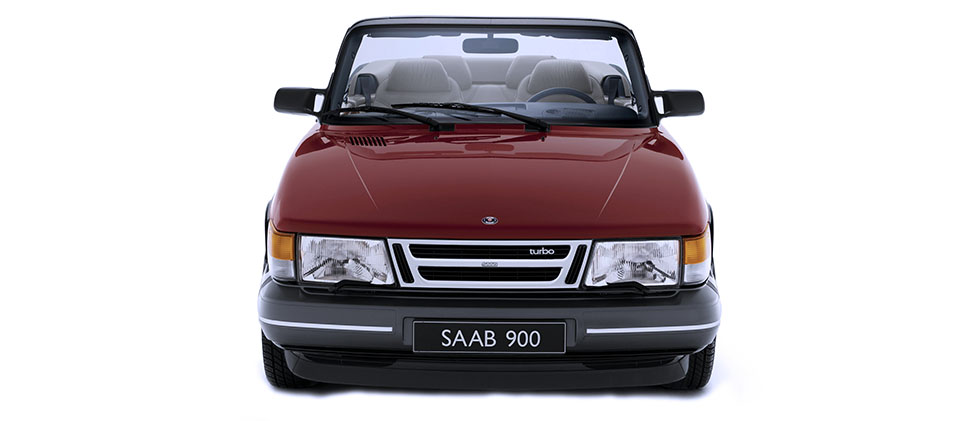
On the cover SAAB history. The innovative Swedish car maker which was chewed up and spat out by GM. Mashed Swede. We chart the rise and fall of Saab, one of the industry’s smallest and most innovative car makers which was dragged into oblivion by one of the biggest. Words: Paul Wager.
I’ve just finished reading Sir John Egan’s book Saving Jaguar in which he details the misgivings he and his management had when the Coventry carmaker was approached by the mighty Ford Motor Company. Egan relates that while the only offer on the table from Ford was a complete takeover, he had already been pursuing a more collaborative path with General Motors. On the same day the decision to go with Ford had been reluctantly taken, Egan learned that GM already had a team in place in Sweden ready to sign up Saab.

Ironically, it was thought by many – Egan included – that the Ford takeover would bring nothing but bad for the Coventry brand but in fact the reverse happened, with quality improving and the products evolving to a level which allowed it to arrive at today’s dominant position.
Saab, on the other hand, which had benefited from Egan’s preferred option of a partial stake and a collaborative approach, is generally agreed to have been run into the ground by GM, which foisted the underwhelming Vectra platform on it, forced it to market rebadged Subarus as Saabs in the US market and then ran away when things got shaky, the firm ultimately collapsing despite the efforts of Victor Muller and his Spyker concern.
This was a great shame since despite having been in existence only since the late 1940s, Saab had a proud history of engineering innovation. In the early days this was a direct result of its beginnings as the car-making offshoot of an aeroplane maufacturer, ‘Svenska Aeroplan AktieBolaget’ which translates as the Swedish Aeroplane Company. Founded itself in 1937, Saab’s purpose was the manufacture of military aircraft to help the Swedes protect their traditionally neutral stance. Unlike many other fledgling car makers of the period, Saab with typical individuality spurned the common approach of making other people’s designs and ploughed its own furrow.
The result was the 92, which was unconventional even when it was unveiled as the ‘Ursaab’ concept in 1947 with its streamlined bodywork and two-stroke motor. Sold from 1949 and available initially only in sober Moss Green, the rumour was that this was simply war surplus paint which helped Saab reduce the production cost of the car. The name was simply the sequence of Saab projects, the 91 having been an aeroplane. Its unconventional appearance came not only from the streamlining but also from the aerospace principles employed in the bodywork construction, the design engineers having been used to creating a very rigid stressed skin, which explains the small rear window. Remember, none of these engineers had designed a car before and not all of them even had a driving licence.
The front-drive layout with the weight of the engine over the driving wheels gave the car good traction in the snow, while the twin-cylinder, twostroke layout brought with it welcome simplicity with no valvetrain to worry about.
The 92 was developed into the 93 for 1956, essentially an extensive update of the original which brought with it a three-cylinder engine, still a two-stroke but providing more power at a heady 33bhp. the torsion bar suspension of the 92 was replaced by coil springs and 12-volt electrics introduced, with seatbelts becoming an option on the home market from 1957.
The 93 was also the first model to be exported by Saab in significant numbers, with some 12,000 going to the USA by the end of the decade: a surprisingly large total considering the unusual nature of the cars. Not only was the engine a two-stroke, but it came with a manual column shift and a freewheel, hence a complete lack of engine braking. The freewheel was an unavoidable result of using a two-stroke which on the overrun is starved of oil. Shutting the throttle on long downhill runs and using a freewheel to disengage drive avoids the problem, although the freewheel was marketed as an economy device and was optionally available on the later 96.
With the 94 tag used for the low-volume Sonett sports car, the next model launch for Saab was the estate version of the 93 launched in 1959 under the name Saab 95. A hybrid of parts from the existing 93 and the forthcoming 96, the 95 was able to carry a 500kg payload while also offering seven-seat capability with a fold-up rear bench in the boot. Other clever design touches included a rear spoiler to direct air flow over the rear glass and negate the need for a wiper and the 95 remained in production until 1978.
The replacement for the 93, the Saab 96 was announced in 1960 and although it looked similar at a glance, it was a thorough update of the original saloon. A new 841cc three-cylinder engine was good for 38bhp although it retained the two-stroke layout and the rear bodywork was modernised to include a bigger rear window as well as larger boot and back seat space.
The Saab 96 was destined to remain in production until 1980, although in 1967 it received a major update with the addition of fourcylinder power which took it into a completely new market.
The engine chosen was the 1498cc Ford V4 unit which had been developed for the Germanmarket Taunus and which produced 65bhp – a massive increase over the old three-cylinder two-stroke. The Ford engine was also added to the Saab 95 estate car in 1967.
The 96 sold steadily but Saab management knew they couldn’t rely forever on a design which had its roots in the 1940s and so by the 1960s were already exploring the development of a new, larger car.
The result was what we know as the 99, launched in 1968 and although still an oddball by mainstream standards was decidedly conventional by Saab standards.
Gone forever was the two-stroke powerplant, replaced by a conventional four-cylinder inline engine. UK engineering consultants Ricardo had already been enlisted by Saab and had proposed a 1.2-litre four-cylinder as a replacement for the two-stroke before the Ford engine had been chosen and it was Ricardo to which the firm turned for its new car.
At the same time, Saab learned that Triumph was intending to develop a similar engine for its own range and in February 1965 a contract was signed for a joint development to produce an engine for both parties. Triumph of course was planning to create the Stag V8 using elements of the design which is why it’s inclined by 45 degrees.
The major difference between the Saab and Triumph installations is that in order to facilitate a longitudinal engine with front-wheel drive, the Swedes rotated the engine through 180 degrees and stuck the gearbox underneath. This meant that the clutch ended up behind the front grille, with the gearbox driven by chain.
The new 99 was unveiled in 1969 and had just the right blend of quirky and conventional to appeal to buyers wanting something slightly different. Saab was still very much in the aircraft business at the time and features like the wraparound windscreen and the instrument layout were reminiscent of fighter planes.
Meanwhile, the 99 also debuted the gearshift ignition lock – thought to be safer in the event of a crash than the steering lock – alongside other features like orthopaedically designed seats, superb ventilation with a heater duct serving the rear glass and of course the excellent crash protection you need in a country where an Elk is liable to walk out in front of you on an icy road. Early 99s used the Triumph engine in 1709cc guise and then familiar 1854cc from 1971, with Saab carrying out its own in-house development to produce the revised ‘H block’ design from 1972 which was available in 1985cc form.
This ensured that the engine had already moved away from the original Triumph design, but the next step was soimething nobody expected fropm the sober Swedes. At the Frankfurt Motor Show in1977, the firm unveiled its Saab Turbo concept, essentially a 2-litre Saab 99 with a Garrett turbo strapped to the side to develop 145 bhp. It wasn’t the first turbocharged road car but it was pretty much the first properly developed installation and was largely the vision of Saab engineer Dr Per Gillbrand, who uttered his now famous quote at the unveiling: “All engines have an oil pump, a fuel pump and a water pump – so why not an air pump? That’s all a turbo really is. I think it’s odd that all engines don’t have one.”
Turbocharging would of course later become a Saab trademark, with that ex-Triumph engine developed out of all recognition into the late ’80s. Meanwhile, Saab launched the 900 in 1978, largely based on the existing 99 platform but with extensive changes at the front end aimed both at updating its style and also improving crash safety with the US market in mind. The car retained all the quirky features of the previous model and the initial model line-up for the UK included the single-carb, 100bhp GL, a twin-carb 108bhp GLS and a 118bhp fuel-injected EMS or GLE, plus the 145bhp Turbo.
Saab’s then-revolutionary ‘APC’ (Automatic Performance Control) was also added to the Turbo in 1982, essentially a boost control using a knock sensor which allowed the engine management system to retard the ignition timing and reduce boost if detonation was detected. An intercooled 16-valve Turbo was offered from 1984, but the Turbo was available with both eight and 16-valve motors until 1989, the Turbo 16-valve good for 175bhp. The Turbo 8 was rated at 155bhp from 1986 when it received an intercooler to boost output.
By 1985, the line-up included the 90 two-door and the 900 in three or five-door hatchback and four-door saloon. The 900 range included the basic 900 sharing the 90’s single-carb 100bhp engine, the injected 118bhp 900i, the 145bhp 900 Turbo 8V and 175bhp 900 Turbo 16V. Available only in the three-door body, the Turbo 16S added a chunky aero-style bodykit.
In 1986, a facelift smoothed off the looks with new grille, headlights and bumper, with a watercooled turbo added in 1988 which has proven to be much more durable.
The eight-valve engines disappeared by 1990, with the normally-aspirated cars now running the 2-litre 16-valve engine. The same year saw the introduction of the 145 bhp ‘light pressure turbo’ engine which appeared in the 900S.
Meanwhile, in 1978 Saab had signed an agreement with Fiat/Lancia on the collaborative development of a new car, which would appear as the Alfa 164, Fiat Croma, Lancia Thema and Saab 9000. The Saab was launched in May 1984 and represented a big jump for the firm, produced in quantities far higher than its previous models and allowing it to offer a wider range than ever before.
The 9000 represented Saab at its most mainstream, although the Trollhattan engineers couldn’t resist extensively reworking the collaborative design to their own ends, redesigning the front end and doors especially for greater crash protection. The result was that very few components were eventually shared between the four cars but one element which was retained was the transverse engine layout, a first for Saab.
The 9000 was a big seller but Saab was still a very small player in a global market. The Saab aeroplane firm had merged with truck maker Scania in 1969 to form Saab-Scania, but in 1989 the firm was restructured to create an independent entity, Saab Automobile AB. Half of the firm was owned by Swedish investment firm Investor AB, with the remaining 50% owned by General Motors which had of course been looking for an alternative to those failed Jaguar discussions. Having stumped up some $600m for its stake, GM had the right to acquire the remaining shares within 10 years if it chose to do so.
Initially the GM involvement was muted, but in 1994, either the benefits of the partnership or the first signs of the rot setting in – depending on your personal viewpoint – appeared with the launch of a new 900.
Looking similar to the outgoing model, the new car was constructed using the platform of the Vauxhall Cavalier/Opel Vectra which on the face of it seems like a sensible thing to do given that Saab’s small size made development of an all-new platform prohibitively expensive.
Somehow despite the thoroughly modern new platform, the new 900 had lost some of the character which made it a Saab in the eyes of marque enthusiasts. A subtle cheapening of the car had crept in, with features like cable clutch actuation instead of hydraulic and a tangibly less solid construction as well as a transverse engine based on the 9000 unit which lost the characteristic exhaust drone.
Despite Saab fans’ misgivings, the so-called GM900 was a sales success and enabled Saab to post a profit in 1995 for the first time since 1988. The new 900 was followed in 1997 by the 9000’s replacement, the Saab 9-5 which recalled the old 95 model name. An all-new design, the 9-5 in fact had more traditional Saab appeal than the 9000, with features like the curved C-pillar, floor-mounted gearshift ignition lock and the clamshell bonnet making a reappearance as well as a distinctive Saab front end style.
The new naming convention was also applied to the 900, which was updated in 1998 to become the 9-3. Essentially a mildly facelifted and rebaged 900, it was produced until 2002. An attempt was made to answer the criticisms of the ‘GM900’ car, with over 1000 changes supposedly made and suspension tweaks aimed at improving that Vectra chassis’s uninspiring dynamics. The new 9-3 had the distinction of being the first Saab to be offered with a diesel engine option – a GM unit – as well as the last car to use the original Triumph-derived Saab engine.
On the corporate side, things got serious in 2000 when General Motors exercised its option to take complete control of the firm, its remaining 50% now costing it $125m, which shows how much the value of the firm had fallen since it first got involved…
With Saab now a GM subsidiary, the engineering of the cars became less of a collaborative and more of a dictatorial relationship. The first fruit of this was the new 9-3 launched in 2003 which was firmly based on GM’s Epsilon platform, also found under the contemporary Vectra and Chevrolet Malibu. No longer powered by the now-defunct Saab engine, the 9-3 now used Saab-badged versions of the GM Ecotec four-cylinder engines.
Once again the new car was spurned by the Saab faithful while being a reasonably successful seller but if the Saab buffs thought it couldn’t get worse they were in for a real shock – at least, in the USA.
Alongside its ownership of Saab, GM also held a 20 per cent stake in Subaru and with an eye to broadening the Saab range in North America, commissioned a Saab restyle of the Impreza. The result was marketed as the 9-2X and fooled nobody, especially when it was fired up and the throb of the Subaru flat-four was audible.
Alongside the 9-2X, General Motors’ full-size SUV marketed under GMC, Buick, Oldsmobile, Isuzu and Chevrolet badges, was also developed into a Saab model, the 9-7X. Assembled in Ohio and powered by a range of straight-six and V8 engines, it had nothing in common with Swedish-built Saabs and was discontinued in 2009 with the closure of its maufacturing plant by GM. Its replacement, the 9-4X was another restyled GM SUV which was made in Mexico.
Meanwhile, the 9-2X had been discontinued in 2005 when GM disposed of its Subaru shareholding and just over 10,000 were sold in total.
Poor sales of these niche models were the least of Saab’s problems as a brand though and as the global recession started to bite, parent company GM found itself struggling.
In 2008 it was publicly announced that Saab was ‘under review’ which suggested the possibility of either selling the brand or shutting it entirely. Discussions took place with most of the major European car makers, some Chinese brands and Swedish supercar maker Koenigsegg. After talks with Koenigsegg collapsed, GM announced its intention to close Saab if a suitable buyer was not found by 2010 but at the last minute a bid led by Dutch supercar maker Spyker saved the day temporarily. Backed by a loan from the European Investment Bank guaranteed by the Swedish government (despite its firmly noninterventionist economic policies), the deal was completed in February 2010.
The first new model to be launched under the new ownership was an all-new Saab 9-5, developed by GM resources and a very credible executive offering too.
Despite this, funds began to run low in early 2011 and after a proposed partnership with a Chinese consortium including Youngman and Dang Pa was blocked by GM which still retained the intellectual property rights to its platforms, Saab/Spyker began to run out of cash.
In the summer of 2011 the firm found itself unable to pay its staff and with GM continuing to block any deals with Chinese partners, the firm formally entered bankruptcy in December 2011. The assets were to be bought by a Chinesebacked consortium going by the name National Electric Vehicle Sweden in 2012, which briefly restarted production of the 9-3 in 2013. An updated model was launched for 2014 with the idea of a petrol-engined car being marketed in Sweden and an electric model being sold in China. It’s unclear whether production is continuing at present but one thing’s for certain: the future of Saab as a car maker as we know it came to an abrupt halt in 2011.
THE LAST SAAB
The newest Saab model was the short-lived 9-5 which was launched in 2010 before production ground to a halt in March 2011 when the firm’s liquidity problems meant suppliers stopped delivering components.
Based once more on a GM platform, the sleek 9-5 was powered by a range of turbocharged four-cylinder and V6 GM engines and at one point the Spyker-owned Saab had announced the possibility of an engine supply deal with BMW before it all collapsed.
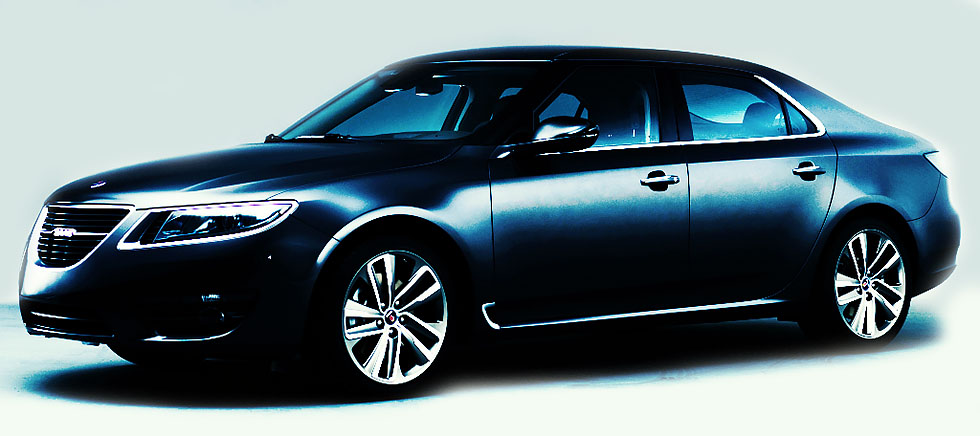
A sleek estate model dubbed SportCombi was announced at the 2011 Geneva show but only a handful of production cars were produced. Of these, 22 were auctioned off in late 2012 in Sweden with the proviso that they weren’t type approved and so couldn’t be driven on the road. Saab fans are a resourceful bunch though and for the privilege of driving one of the rarest models a handful of buyers managed to get their cars on the road by circumspect means: several managed to get them registered in Germany and were then able to simply transfer the registration from one EU state to another.


9000 was succeeded by the 9-5 which in capacious estate form was a popular car in the UK.

Overhauled 9-3 had the distinction of being the last Saab model to survive.
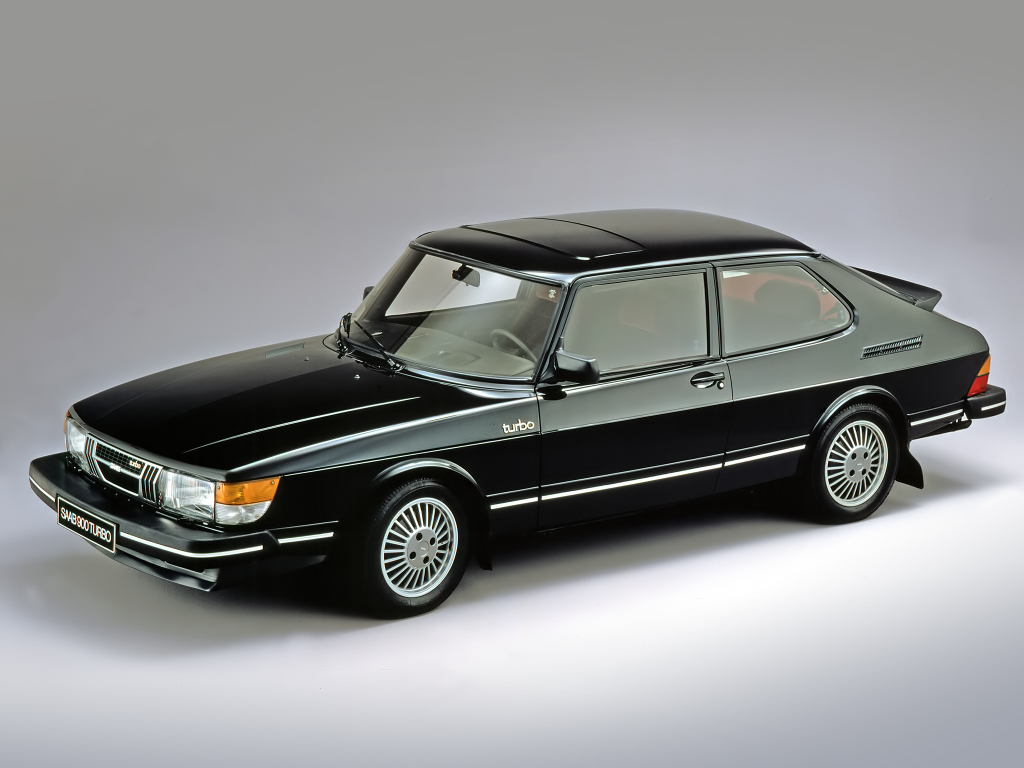
The 900 Turbo was a more mainstream product than the specialised 99 Turbo.
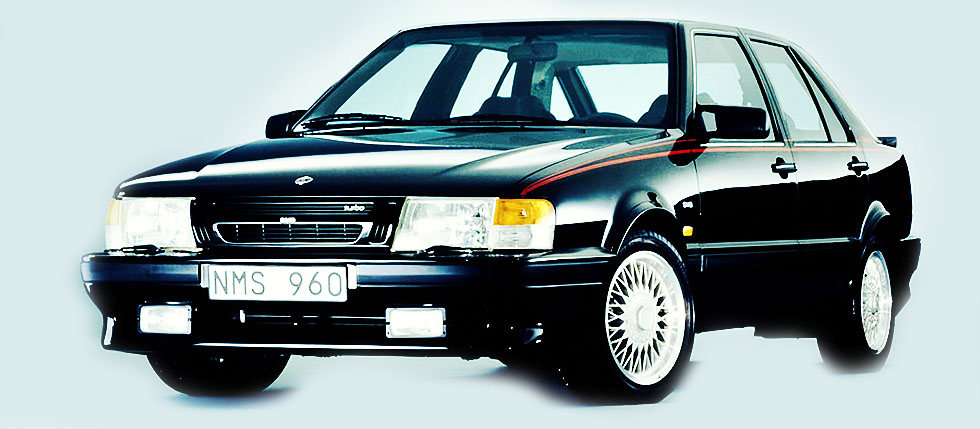
The 9000 was designed in collaboration with Fiat/Lancia/Alfa but was extensively modified by Saab.

The GM-based 900 was less Saab but was a big seller.
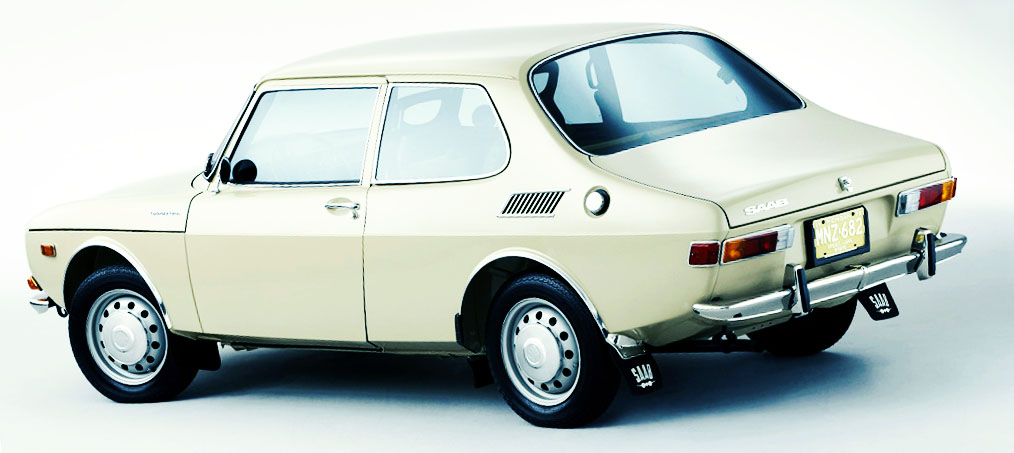
The 99 was a bold new departure for Saab and took it into a new market.
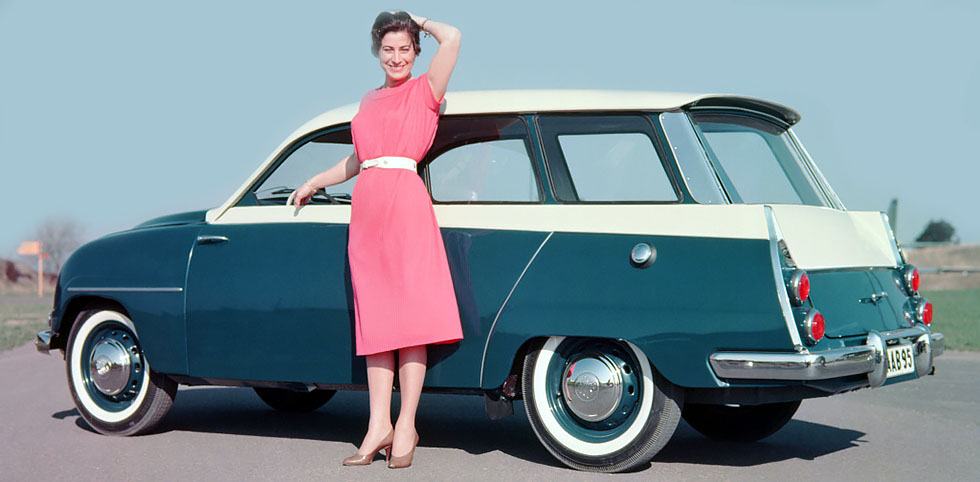
Impressively, the 95 estate car lasted in production until 1978.

The original UrSaab: its odd looks were a result of the design engineers’ aerospace background.
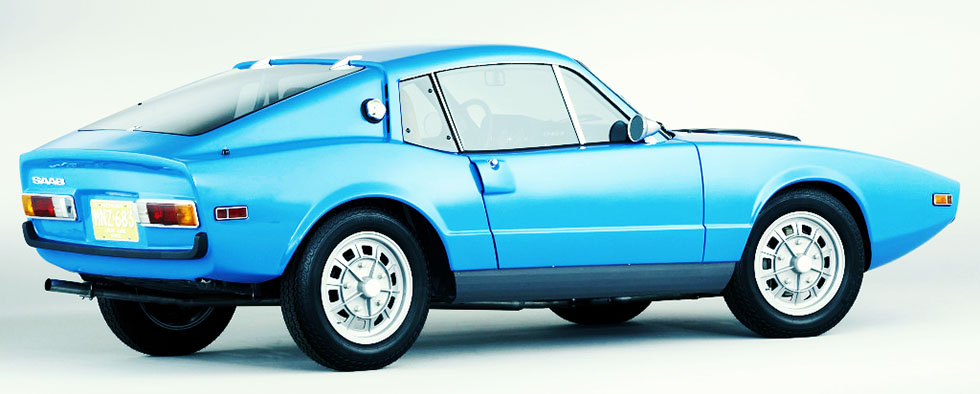
The Sonett looked wild but used the running gear of the 96.
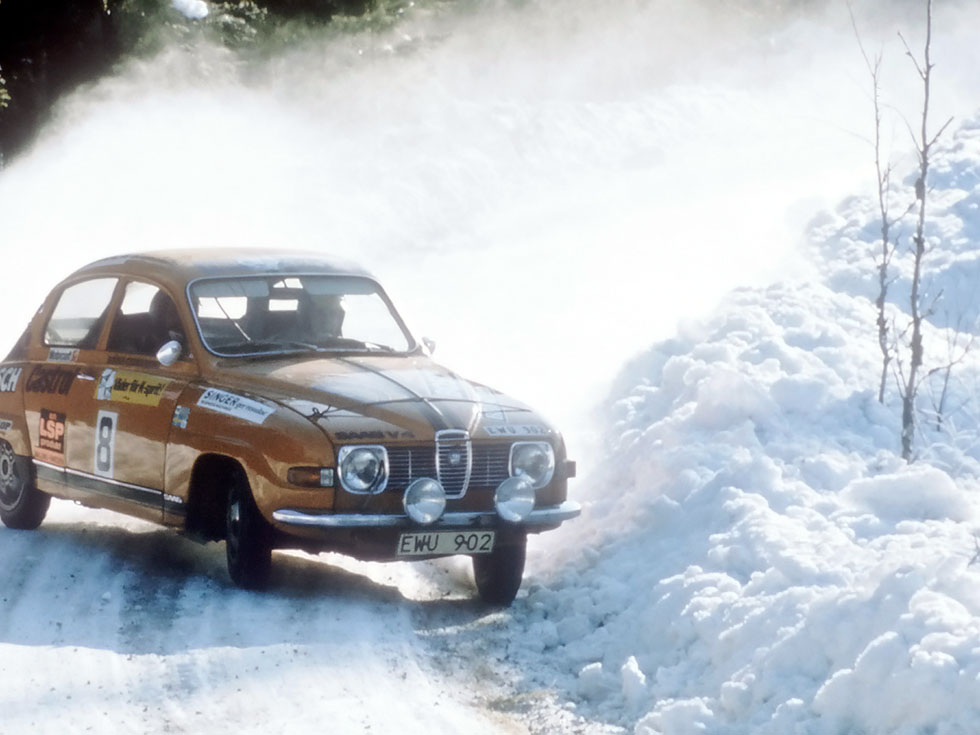
Rugged construction and front-drive traction made the Saabs regular rally winners.

The original 900 is the one Saab fans favour: the GM-based car is built on a Cavalier platform and feels very different.
“None of these engineers had designed a car before and not all of them even had a driving licence”





